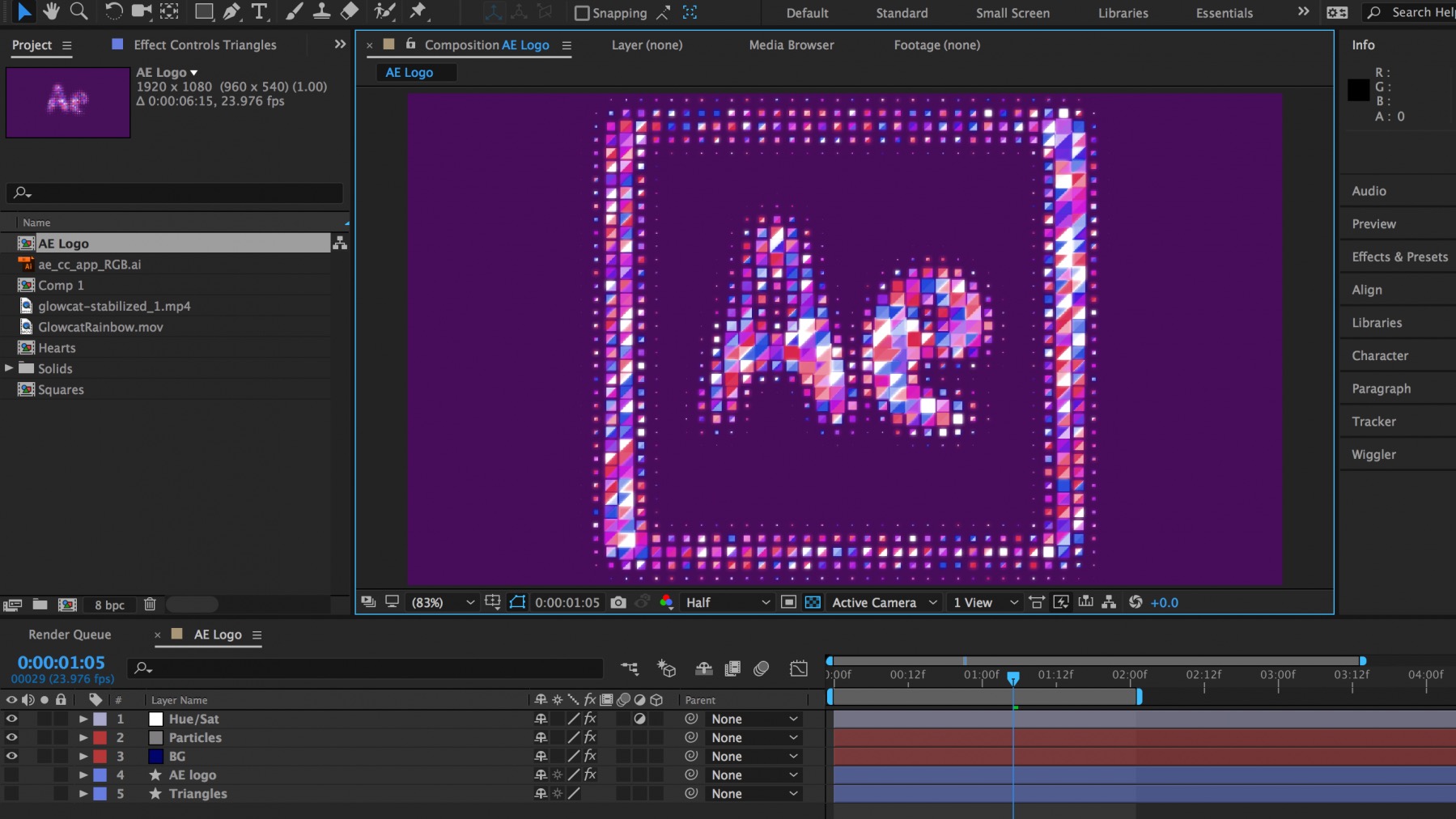

- #Adobe after effects make logo pop up how to
- #Adobe after effects make logo pop up movie
- #Adobe after effects make logo pop up full size
Create a RAM Preview to see the new results-nice! Now, while the layers are still selected, go to the end of the Timeline and press Option- (PC:Alt-) to extend their visibility till the end. In the Sequence Layers dialog, check the Overlap box on, set the Duration to 5 frames, and Transition to Off, then click OK-this now offsets the layers by 5 frames in time sequentially. Now go to 10 frames on the Timeline, press Option- (PC: Alt-) to trim all the layers to 10 frames, then Control-click (PC: Right-click) on any selected layer and choose Keyframe Assistant>Sequence Layers. This is very important, as it will set the order of the layer sequencing. First, select the bottommost artwork layer (not the shape background), then hold down Shift and select the topmost artwork layer. Our basic animation is now in place, but the timing is the same on all layers. “Un-Solo” the layer you worked on originally, then press 0 on the keypad for a RAM preview, and confirm that all layers now have the same “pop” scale animation. Now, select the rest of the layers in the comp (excluding the Background and the layer you’re copying from), and Paste (Command-V PC: Ctrl-V) to apply the same animation to all of them. Copy them to memory (Command-C PC: Ctrl-C). Click the Graph Editor icon in the Timeline, select the last keyframe, click the Easy Ease In icon to convert the keyframe, then adjust the curve handle upward to extend the scale above 100%, before it drops back in.Ĭlick the Graph Editor icon to return to the regular Timeline view, then Shift-select both keyframes for the Scale property.
#Adobe after effects make logo pop up full size
Next, we want to change the velocity and the ease so the animation will grow a bit beyond full size before ending at 100%, and we can use the Graph Editor very nicely for this. Return to the first frame (0) and change the Scale to 0%. Go to 10 frames along the Timeline and click the Stopwatch next to Scale to set a keyframe with the current value of 100%. At this point, I’d also suggest clicking the Solo switch to visually isolate this layer. Let’s start by selecting any one of the artwork layers and press S to show the Scale properties. We only need to set it for one layer and then use the same settings for the other layers, with minor adjustments as needed. Next, we want to set an interesting popping animation that reveals all the layers sequentially. With the shape layer selected in the Timeline, press Return (PC: Enter), rename it “Background,” and then use the keyboard shortcut Shift-Command- (PC: Ctrl-) to send it beneath all the layers. Press OK to confirm, then return to the Selection tool (V), and drag the tiny right circle on the screen until you’ve reached the edge of the comp, which will define a nice even gradient from the middle to the edge of the screen. Click on the Gradient Fill icon in the Toolbar and click on each color stop to set the colors to fit your design (we used dark purple and warm orange). Next we’ll define two suitable colors that will blend well with the design. Select Shape Layer 1 and in the Toolbar, set the Stroke to 0 px, click the word Fill, choose a Radial Gradient, then click OK. Double-click the imported comp (ours is “Flower Power”) to open it, ensure nothing is selected, and then double-click the Rectangle tool (Q) to create your first shape background. The spec for this project (Composition>Composition Settings) is a square-pixel comp of 720×534 pixels (from the Preset drop-down menu, choose NTSC D1 Square Pixel-these are the new CS4 corrected PAR dimensions for NTSC and should come up automatically if you set it in Illustrator), 29.97 fps, and 5 seconds in length. Be sure to set Import Footage to Composition and set the Footage Dimensions to Layer Size. Import your artwork into After Effects by choosing File>Import>File. Working in an organized way will make the animation process faster, making life much easier if you need to go back and change things later on. One important note: Make sure to set the layer structure correctly and always name your layers in a logical manner. This workflow allows me to keep all the layers (as with Photoshop) and yields a much clearer and crisper result even when scaled up within After Effects. I always prepare my graphics in Illustrator, because of its vector qualities.
#Adobe after effects make logo pop up movie
If you’d like to download a finished movie for this tutorial, just click here. Then we’ll add the new CS4 Wiggle Transform operator combined with the Repeater to explore some fun and random animations.
#Adobe after effects make logo pop up how to
In this tutorial, we’ll show you how to set up the popular “popping” animation effect with very little effort. Combining vector art and shapes inside After Effects can yield some great and unexpected results.


 0 kommentar(er)
0 kommentar(er)
